
Macro lenses around 100 mm are among the most popular primes because they can be used for a very wide range of applications. So, how did Sony’s 2.8/90 turn out? Check out my review for the in-depth analysis.
Image Samples
You can find all images shown in this review in full resolution in this album.



Specifications
| Diameter | 79 mm |
| Length | 130 mm |
| Filter Thread | 62 mm |
| Weight | 605 g |
| Max. Magnification | 1:1 |
| Close Focusing Distance from the sensor | 0.28 m |
| Number of aperture blades | 9, rounded |
| Elements/ Groups | 15/11 |
Disclosure
I bought the review copy from amazon.de with my own money and used it for about four months.
Key Features
- 1:1 Magnification
- Optical Image Stabilizer
- Focus Hold Button
- Focus Limiter
- Linear-coupled Focus Ring
- Internal Focus
The Sony FE Macro 2.8/90 G OSS offers all the bells and whistles you would expect from a modern premium macro.
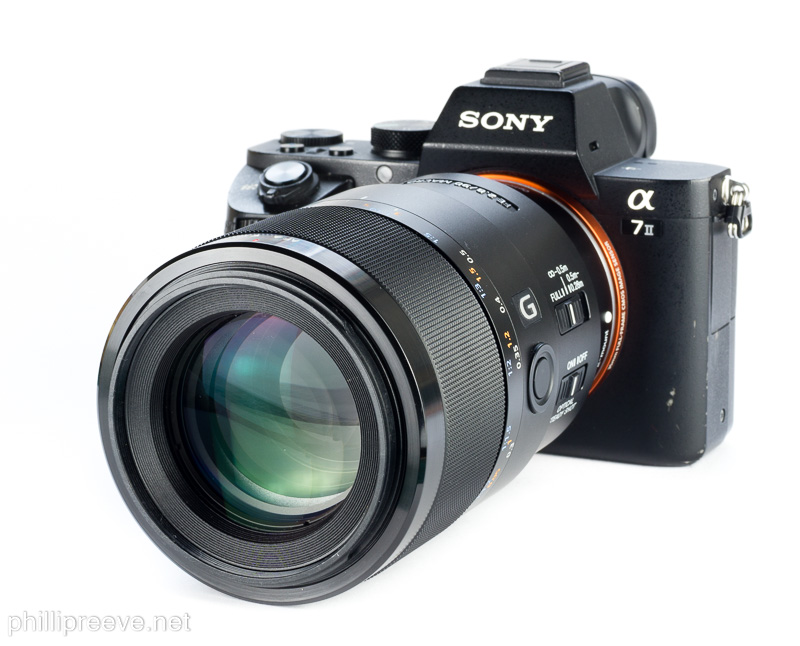
Build quality and handling
The Sony FE Macro 2.8/90 G OSS offers good but not great build quality. Part of the outer hull is made from aluminum while the internal parts, the buttons, the focus ring and the front of the lens as well as the filter thread are made from plastics. The buttons and switches feel solid enough. Some markings are engraved, others like the serial number aren’t.
There is no gasket around the mount and Sony is inconsistent in claiming weather sealing. Sony.net does no claim any weather sealing, Sony.com does. I asked one guy whom I trust on the topic and he was very unenthusiastic about the Sony’s weather sealing. Personally I wouldn’t trust this lens one bit in harsher conditions.
Of course I can’t tell you how durable the lens will be in the long term. All I can do is give you my superficial impression which is good enough but hardly exciting in this case. I guess for the high price I would have expected a bit more. The FE 4/70-200 which is also a G lens felt more solid to me.
Handling
Switches
The Sony Macro has one focus stop button which you can reprogram to other functions like eye AF which is quite handy.
There is also a focus limiter which reduces hunting and a switch for the optical stabilizer. The switches and the button both work well enough and they make operation a bit easier.

Focus Ring
The Sony Macro has a special focus ring which has two modes: AF and MF. In both modes resistance is well tuned and the ring is well placed and easy to grip.
If you pull it towards you, the MF mode is activated. So far it is unique to the FE 90 Macro. In MF-mode you have a focus scale, hard stops (don’t expect them to be useful to get correct infinity focus) and the focus ring is coupled linear. It travels a little less than 180 degrees from 28 cm to infinity which is a super steep transmission. In this mode focus is still by wire.
Because the transmission is so steep it is quite hard to focus at longer distances in MF mode but at medium distances I found it a significant improvement over Sony’s normal MF-implementation. You can switch to macro mode very fast and do your focus fine tuning by moving the camera.
If you push the focus ring away from you and switch the camera to MF the focus ring works like the one on other Sony lenses. Transmission is a lot less direct but the focus ring does not work in a linear way which slows focusing down a lot for me.
I use both modes, the “AF-Mode” for landscapes where I need very precise focus and the MF-Mode for shorter distances.
Hood
The Sony FE 2.8/90 comes with a big hood made from solid plastic. Since it doesn’t fit into my normal camera bag I never had it with me so I can’t tell you how effective it is.
Size and Weight

The Sony FE 2.8/90 Macro is one of the larger E-mount lenses. It is taller than the FE 4/16-35 but not as tall as the FE 4/70-200. Since it isn’t very heavy it still balances quite well on my Sony a7ii but it feels a bit hollow compared to the more dense 16-35 or 2/65 APO.

AF-Performance
The Sony focuses internally and AF is nearly noiseless.
The FE 2.8/90 Macro is one of Sony’s slower focusing lenses. It’s not nearly as slow as the FE 1.8/50 or 2.8/50 Macro where AF is a real issue, but it does not focus as fast as the FE 1.8/85 or FE 1.8/55. My a7ii isn’t a fast AF camera to begin with but using it my keeper rate was a bit lower for more dynamic portraits of a little boy. For more static portraits it was fine.
Stabilizer
The Sony FE Macro 2.8/90 G OSS has an optical stabilizer. On my a7ii it compensates about 2-3 stops which is maybe a stop more than I would expect from the camera’s stabilizer alone. This makes it possible to get decently blurred water handheld and it also makes it possible to take blue hour photographs with lower noise.

Optical performance
These results are based on the use with a Sony Alpha 7II.
Flare Resistance
Flare resistance isn’t overly impressive for a modern lens. With a strong light source in the frame there is significant veiling flare and minor ghosting.
That’s a real issue if you want to lift your shadows on a high contrast scene. If you keep your shadows black it is usually not an issue.

Sunstars
Not a strength of the Sony. Even stopped down to f/16 sunstars are fuzzy.

Bokeh
In general the lens has really smooth bokeh, I would rate it as one of Sony’s finest in this aspect. But let’s have a closer look.
Scenario 1: highly demanding scene at life size
Here the oof highlights are very bright which makes for a very demanding scenario. We see very minor outlining, mostly clean inner circles (well, clean from onion rings. Should have cleaned the lens before.), very little color fringing and some weird shapes towards the corners. The shape of the aperture is not distracting even at f/5.6.
Scenario 2: Short distance with semi demanding background
Here we see very pleasing background rendering with no outlining, only the cat-eye-effect at f/2.8 and to a lesser degree at f/4 is a little distracting.
Scene 3: Semi-demanding Background at portrait distance
I find it hard to find any fault in this scene.
Scene 4: Longer distance
Most lenses have significantly worse bokeh at longer distances but I think the Sony does a pretty good job here. The background is rendered pretty smooth despite the distance. The foreground is very smooth as well.

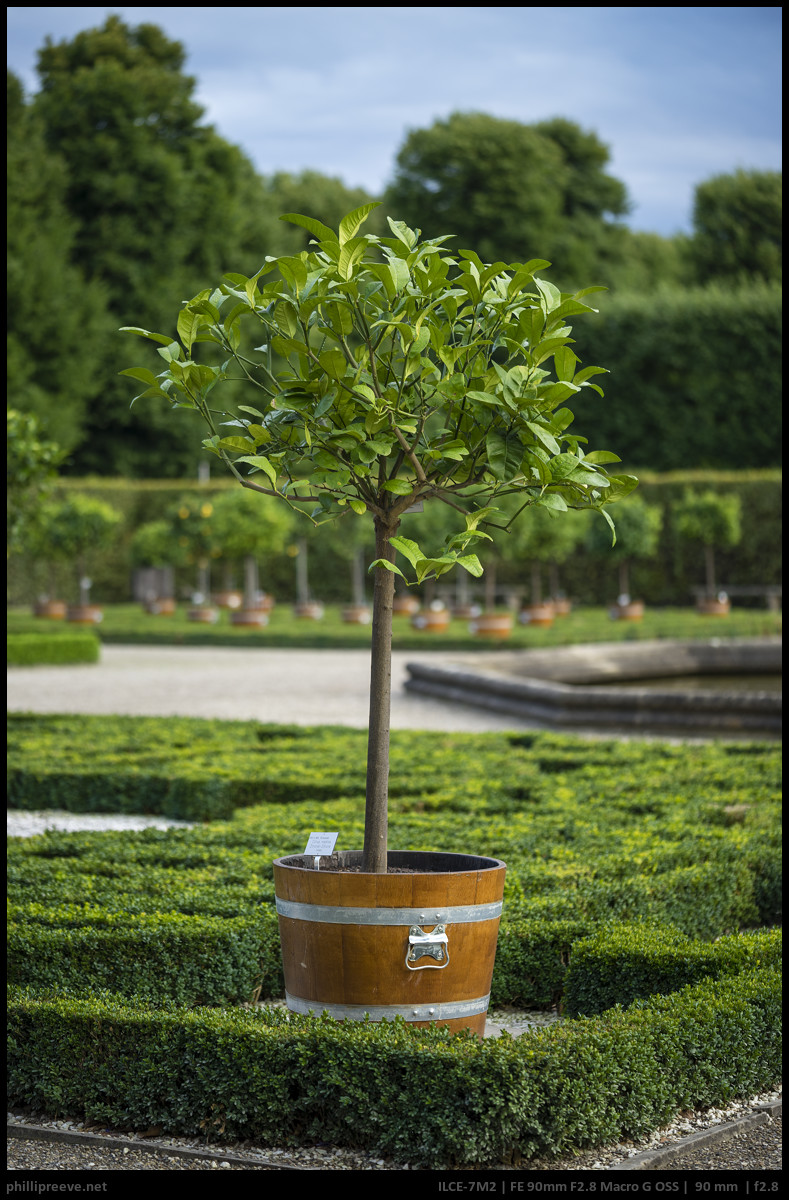
Chromatic Aberrations
The Sony FE 2.8/90 Macro is exceptionally well corrected for axial CA and Spherochromatism. In my worst case scenario test there is a little color fringing and correction isn’t quite as good as with the CV 2/65 APO but still on a very high level.


Vignetting
Vignetting at f/2.8 is 1.7 stops which is quite a bit and visible if uncorrected. Stopping down to f/4 reduces it to 0.8 stops which are hardly noticeable. At f/5.6 vignetting is hardly noticeable at 0.4 stops and at f/8 I measure 0.2 stops:

Distortion
The Sony FE 2.8/90 shows a very small amount of barrel distortion. It will hardly ever be noticeable in you image and if it is the supplied profile corrects it perfectly. Still most other macro lenses show no visible distortion at all.
before: no correction | after: with standard LR profileSharpness
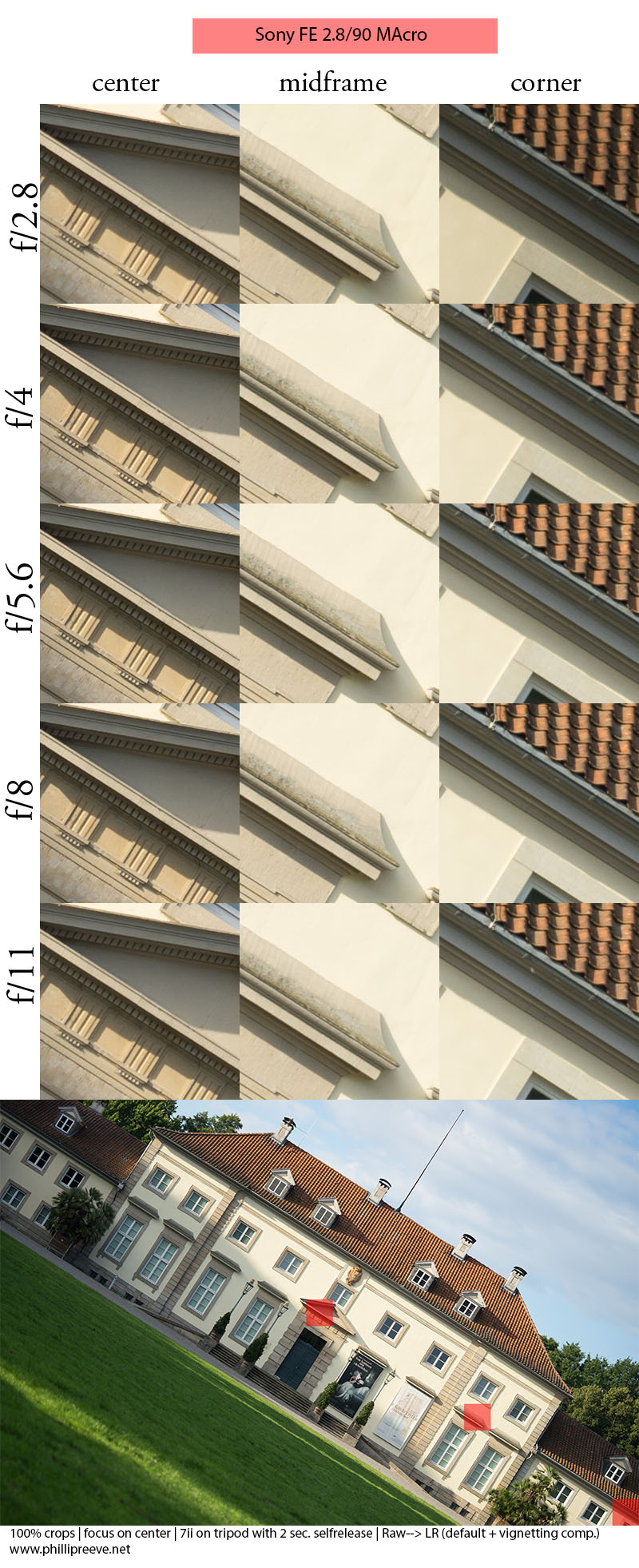
The Sony FE 2.8/90 Macro is one of the sharpest E-mount lenses available at the moment. It is not quite as good as the Batis 135 or CV 2/65 APO which are the sharpest E-mount lenses available at the moment, but it is not far behind.
From f/2.8 it is excellent in the center with still very good corners. The corners improve a little at f/4 and f/5.6 where they reach excellent levels.
I don’t have a good setup to test at short distances but Roger Cicala ran this interesting test which showed that the Sony was the sharpest macro lens tested at a 1:2 reproduction ratio. Because he is averaging his measurements and because the Sony has serious copy to copy variation MTF for a good copy like mine will be significantly higher than Rogers results.

Copy-to-Copy variation

Sony doesn’t have the best reputation when it comes to quality assurance and the Sony FE 2.8/90 is, according to lensrentals data, one of Sony’s lenses with the highest copy-to-copy variation. As a team we have so far purchased 5 copies of which 3 were badly decentered. It was only from my second copy that I came to appreciate the FE 2.8/90’s qualities.
So if you decide to buy your own copy make sure to buy from a seller with a good return policy and test it or test your lens before you buy it. It is worth the struggle to get a good copy but be prepared to invest some time into finding a good copy.
Alternatives
Voigtlander 2/65 APO Macro: As we have seen in the review the Sony performs on a very high level but the Voigtlander is even better with close to perfect CA correction. The Sony’s advantage is a little smoother bokeh, especially in the transition zone. If your focus is on macro photography the Sony is the better option because it focuses to 1:1 and is significantly longer. The manual focus Voigtlander on the other hand offers a more universal focal length, nicer handling, superior build quality and nice sunstars.
602 g | $998 | amazon.com (affilate link)
Sony FE 2.8/50 Macro: The much smaller, lighter and cheaper 50 mm Macro is nearly as sharp as the 90 mm with a little more CA and better flare resistance. It’s biggest drawbacks are the crappy AF-motor and the 7 straight aperture blades which are detrimental to the bokeh stopped down. The FE50 Macro is a pretty nice hiking lens whereas the FE90 Macro is better for insect macros and portraits.
236 g | $448 | at amazon.com (affiliate link)
Sony FE 1.8/85: It does not go beyond a magnification of 1:8, so it isn’t an alternative for macro use. For other applications the cheaper, lighter and faster FE85 is probably the better choice even though the FE90 is slightly better corrected. The strength of the FE90 Macro is it’s wider range of applications.
371 g | $598 | amazon.com (affiliate link)
Tokina 2.5/90 Macro: The Sony is a bit better in the corners at f/2.8, it’s axial CA correction is better and flare resistance is significantly better. Apart from that the Tokina is a pretty remarkable lens even today.
530 g + adapter | about $300 used | at ebay.com (affiliate link)
Zeiss Makro Planar 2/100: The fully manual Zeiss which only focuses to 1:2 is a bit larger and heavier (with adapter) but not by much. In the end I sold it because I was too bothered by the high amount of axial CA which outweighed its otherwise awesome performance and wide range of applications.
MTF-data | 660 g + adapter | about $750 used | at ebay.com (affiliate link)
Canon EF 2.8/100 L: I haven’t used it personally but by reading other people’s reviews I think the Sony is a bit sharper off-center (if you get a good copy) with better CA correction. The Canon on the other hand is a little more affordable and offers weather sealing.
Conclusion
pros
|
average
|
cons
|
The FE Macro 2.8/90 G OSS is the best lens from Sony I have reviewed so far. Optically there is a lot to appreciate: Sharpness is excellent in any scenario, CA very well corrected, there is very little distortion and bokeh is really smooth. My minor criticism would focus on the rather average flare resistance and pretty strong vignetting but these will only rarely affect your images.
Handling of the not that small lens is generally fine. The special focus ring makes manual focus more pleasant than Sony’s normal implementation but it doesn’t come close to the focus ring of a manual lens. Features like focus limiter, OSS-switch and a focus stop button make handling a bit quicker. I think the build quality is good enough but for that much money I would have expected a little more. Good enough is also a good description for the AF.
I think the Sony is your best choice if you are serious about shooting macros with your E-mount camera. In this field it excels with class leading performance. It also works well as a general purpose lens for portraits and landscape but of course it is quite large and expensive if compared to non-macros. So if you like to occasionally shoot macros you might prefer it over the FE 1.8/85 which is more versatile for these applications but doesn’t do macro.
All in all the Sony FE Macro 2.8/90 G OSS is one of Sony’s finest lenses and will master most challenges which are thrown at it with excellent results. The moderately fast aperture and focal length make it one of the more universal FE lenses and I think it will deserves a spot in many camera bags. The price is very high but so is its performance. If you get a good copy.
The Sony FE 2.8/90 G OSS sells for $998 at amazon.com, B&H Photo or ebay.com, 1049€ at Amazon.de (affiliate links).
If this review was helpful to you, please consider using one of my affiliate links. Thanks ?
More Image Samples
You can find these and more images in full resolution in this flickr set: Sony FE Macro 2.8/90 G OSS.
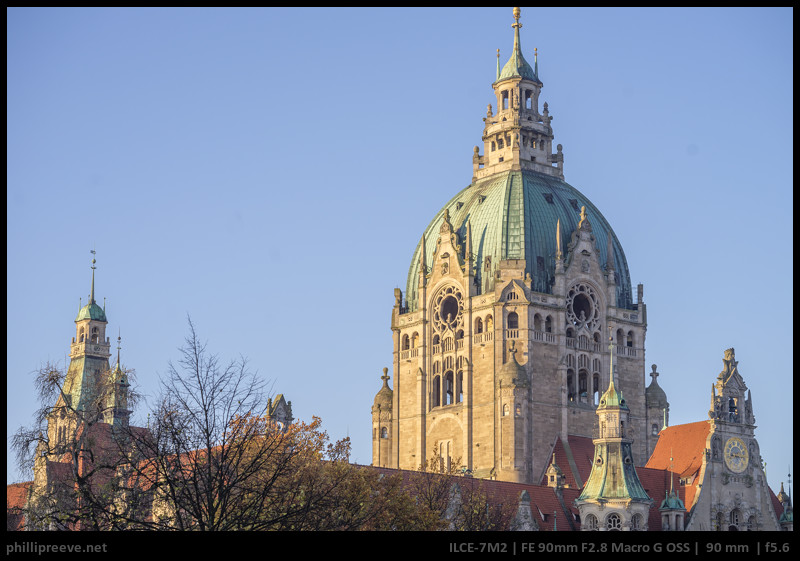




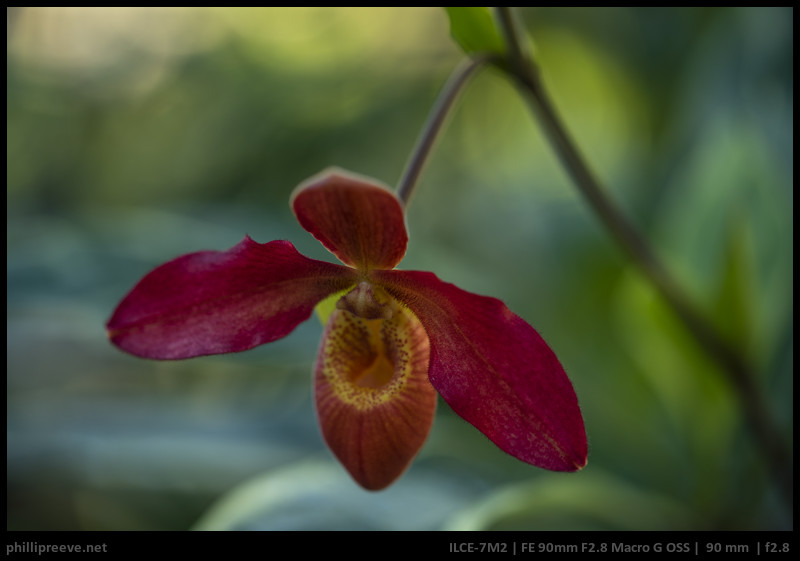
Other articles
- Review: Voigtlander 65 mm F2 Macro APO-Lanthar
- Sony FE lenses: A comprehensive and independent guide
- Review: Sony FE 2.8/50 Macro
This site contains affiliate links. If you make a purchase using any of the links marked as affiliate links, I may receive a small commission at no additional cost to you. This helps support the creation of future content.
Latest posts by Phillip Reeve (see all)
- Review: Samyang AF 75/1.8 FE - April 12, 2021
- The FE-List now has 113 lenses on it - March 25, 2021
- 2020 – Year’s end review - December 28, 2020



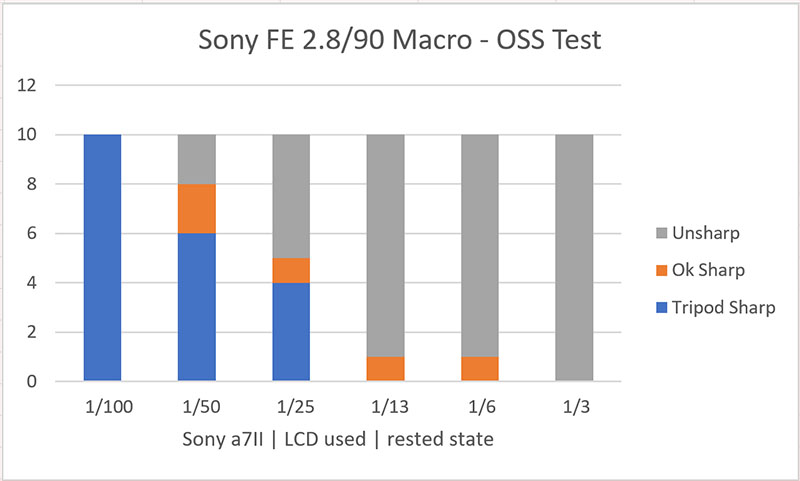






















A hell of a lens (at a price…) with no doubt. Among the alternative lenses, I would include the Tamron 90 2.8 and the Sigma 105 2.8 (Sigma has longer macro lenses as well, 150 and 180, both superb). Currently I have the Tamron, but I’ve owned two of the Sigma lenses and all of them are really stellar.
I would add as a big con the quality insurance. It is wholly unacceptable that only 2 out of 5 lenses are worth the specifications.
And this is with the lens new… Any idea about the risk of degradation with time.
I am sold Manual lenses… I just wished Techart could get their act together with their AF converter
… before I replace my Sony A6000 which is not compatible with either A6500 or A7Riii
Why is the a6000 not compatible ? Same e mount as 6500 and FE lenses will fit a6000 and 6500.
I think it is a matter of focusing. Sony changed the way the AF works. That is what I read + Phillip indicated there are problems with the Techart pro that need resolving.
So I am waiting for confirmation problem has been solved.
(Sony could also market such af adapter as it would boost their camera sales, but I don’t think they plan to do this as old manual lens would compete with their lenses
I’m surprised you didn’t mention the Zeiss Loxia 85/2.4, which is similar in focal length and f-number.
Granted, the Loxia cannot do macro or autofocus, but I am curious how the optical performance compares at longer distances. Especially since you added the non-macro 85/1.8 in your comparisons.
Also, the Loxia has a rubber ring around the lens mount so it might be better sealed.
Also, regarding weather sealing, questionable as it may be, at least the 90/2.8 is better sealed than legacy or manual macro lenses that extend a significant amount. For example, the Voigtlander 65/2 practically vacuums up dust and moisture as it extends to twice the length with no sealing whatsoever! Likewise for the Tokina and the Zeiss Makro-Planar.
Perhaps it would be wise to mention this fact to avoid misleading readers who might pick up a Tokina 90/2.5 for use in the rain!
Why do you think that it is better sealed? As of now I have contradicting marketing claims and zero independent, reliable information.
I certainly didn’t tell anyone that the Tokina is weather resistant so I don’t think that anyone will be misled.
Everything you said is technically correct of course, but never underestimate how easily people can become misled. Someone shopping for a macro lens would likely look at “pros and cons” table for each one of the suggested alternatives. Only one of the lenses has “Questionable weather sealing” as a con, and the others don’t. Don’t you think people who are unfamiliar with lenses might be confused?
As for the Sony 90/2.8 being more weather resistant than the manual lenses I mentioned, it is simply because of the fact that it doesn’t extend its length, so it won’t suck in any dust or get moisture on the extended part of the lens barrel. So, if I were to choose between the Sony 90/2.8 or a Zeiss 100/2 Makro Planar for shooting small mushrooms on a slightly drizzling day, I’d pick the Sony. I still wouldn’t take it out during heavy rain though.
Well those manual lenses don’t have any switches or buttons nor the AF/MF switch which could all be a way for water to get into the lens which relies on many electronic components. In your scenario I would take the Tokina.
You are right, normally I don’t list the lack of weather sealing as a con but here Sony’s claims in some countries are pretty dangerous in my eyes so I listed it as a con. Zeiss or Tokina never claimed any weather resistance for their macros so there is no risk that people believe misleading marketing.
Sony had to remove many claims about weather sealing in the past because people believed their marketing and then found out the hard way that most of their cameras and lenses aren’t weather resistant at all and that a repair center will in any case blame the customer for water damage. To quote Roger Cicala: “Camera manufacturers market their equipment as weather resistant. But if you get water inside the camera the warranty is void. So that’s pretty much “we guarantee it will work unless it breaks.””
Well said
Just a few comments:
1. Plastics – normally people perceive non-metal as poorer quality construction. But today there are very high quality “plastics”, and I am glad they are used, makes lenses lighter.
2. Lens hood – not using the lens hood and then complain about flare does not make sense. Time to update the camera bag?
3. Sealing – the Sony website in my country (Portugal) mentions “design resistant to dust and humidity”.
1. All I am saying is that it doesn’t feel too solid. And I have handled a number of “plastic lenses” which feel more solid than this lens. Among the Sony FE 4/70-200. As any other reviewer bar Roger Cicala I am in no position to judge how durable the lens is.
2. My assessment makes perfect sense. The flare test would have looked exactly the same with hood because that does nothing if the sun is in the frame. When the sun is just outside the frame I prefer to shield the front of the lens with my hand which is usually more effective and I don’t have to deal with the annoying hood.
3. As does Sony.de. The big question is whether that claim is worth anything? I don’t think so.
I’m wondering just how much can be based on Roger’s OLAF MTF tests, aren’t they just the F/2.8 results?
A much more informative result would be to show the performance where the lens is at its best.
I think with the latest results he’s trying to show just that, though so far only cine lens tested/compared.
Hi Phillip
Thanks for this review, as with everything on your excellent site it is really helpful. I have been using the lens for some time, it does offer great versatility of a lovely sharp 90mm and wonderful macro. I remain however in two minds about size, weight and durability.
You often mention that lenses may or may not be properly centered – could you explain how this can be checked?
Many thanks and keep up the great work.
There are various ways to check for centering, using a Siemens star is maybe the easiest once you know how and you have one.
But the most straightforward is to find a position where there is detailed stuff at infinity – city scenes from a distance, or a line of trees. Take two images, each which has the line of buildings/trees going across the diagonal. One from top left to bottom right, one from bottom left to top right. Take a few to choose the best.
Then compare all four corners. If they are roughly similar in sharpness you are golden. If there is a slight difference, don’t worry too much. If there is a huge difference you have a problem.
The 90 though seems not so much to suffer from decentering as from skew. A bad copy will have all of one side noticeably less sharp (best tested wide open) than the other. It’s not hard to see.
Remember the golden rule of not worrying too much: anything that is hard to see at 100% doesn’t matter!
Roger at lens rentals says reassuringly that if your lens is good ex-factory – when you buy it – it will stay that way barring being actually broken. Having tested it, and having a good copy, you don’t need to worry about it gradually going out of spec if you don’t drop it. And any lens can fail from dropping.
As for the lens: I love this lens, but love it as I do, I think you should get it only if what you want is a macro lens. If you really want a short tele macro, you get a decent portrait lens for free. And it’s relatively small and light for a life-size short tele macro.
But if what you really want is a short tele landscape or portrait lens, you are not getting a macro lens for free: it’s much bulkier than a similar aperture short tele without macro would be, and similar in size and bulk to considerably faster short teles.
So, I’m a recent convert to the Sony ecosystem – I have two main interests, underwater photography (typically within 1-2′) and portraits. I was originally looking at the 50mm macro for underwater and the 1.8/85 for portraits. However, it seems I could just get the 90mm macro for both. The downside is the 90 is significantly larger and the minimum focusing distance is kind of long… The advantage of only carrying around a single lens is kind of enticing though.
From your reviews, it seems like the main downside, for my purpose the size/weight – it doesn’t seem like the individual lenses offer a great benefit, or detraction from the single. Would you agree?
Hello, is this lens suitable for cinematography?
I mean can I gear it up or the hard stops and the linear transmission in MF are not real?
I now use the Nikkor Ai-s 1.4/85 with gears and adapters (close focus, ND, metabones) to give you a clue.
Is copy-to-copy variation still a problem when purchasing Sony lenses ???
“Sony doesn’t have the best reputation when it comes to quality assurance and the Sony FE 2.8/90 is, according to lensrentals data, one of Sony’s lenses with the highest copy-to-copy variation. As a team we have so far purchased 5 copies of which 3 were badly decentered. It was only from my second copy that I came to appreciate the FE 2.8/90’s qualities.
So if you decide to buy your own copy make sure to buy from a seller with a good return policy and test it or test your lens before you buy it. It is worth the struggle to get a good copy but be prepared to invest some time into finding a good copy.”
Yes, it is.
Yikes. How can a consumer know whether or not they bought a good copy? Makes me hesitant to purchase this lens without knowing whether or not my lens is constructed correctly. This aspect , if still true (2021) is a major con. Very disappointing.
A simple decentering test is a very easy and good start.
Hello Phillip, I have chosen to add this lens to my set up, what is the process to make sure I have a good copy? How do I test the lens to determine it’s centered?
Thank you.
Try this test
Hi, I made corner crops at f/2.8 of this lens. To my eyes it looks pretty even. I was afraid for something more worse than this. What is your opinion?
The production date of the lens is 04/2019
https://drive.google.com/drive/folders/1-_i9xVtWIKrxbocCg3sNrv-v-wlq5pHp
Hi, I still have my nice old Olympus OM manual lenses. For portraits with movements I tried the FE 85 1.8 vs the FE 90 macro vs my Oly 90 2.0 macro. I use a Sony A7II. First disappointment was the AF. It wasn`t better/faster than using the manual lens.
Then I compared them at Infinity, middle an close focus. Both macro lenses at 1:2.
In terms of sharpnes there was a clear overall winner: the Olympus. Bokeh: 1. FE 1.8, close to: Olympus. 3. FE 90. Contrast: 1. FE 90, 2. Olympus (got the same level with small clearity push in lightroom), 3. FE 1.8. The CAs at F 2.0 of the Oly were gone with one click in LR. The 85 1.8 was a real disappointment for me. So I kept the Oly… couldn`t believe, that theese modern lenses aren`t much better than my old Olympus…
Have you tried the more recent Sigma 105mm DN macro? I rented both it and the Sony and was surprised at how different they felt in use. The Sigma tended to bounce around rather noisily while focusing in AFC mode but ended up giving me very sharp results nonetheless, rendered a bit more warmly (which I have to admit I really like as I was largely shooting spring flowers), and the extra 15mm of reach helped separate subject from background. The Sony was noticeably cooler/more neutral in color, focused more quietly, and I missed having an aperture ring. (And I appreciated having OSS when I used it on my A7, though given that flowers move in the wind it was more about easing focus adjustment than getting the shot.)
I didn’t find the focus clutch useful as I rough in my focus using AFC and then switch to manual for final adjustments – so want a standard by wire delta focusing implementation anyway.
The Sony was lighter, easier to focus and quieter, but I found that I liked the Sigma pictures better in general. I think it really came down to the extra reach on Sigma (backgrounds were a bit more blown out in particular) and perhaps the color shift working for my subject matter.